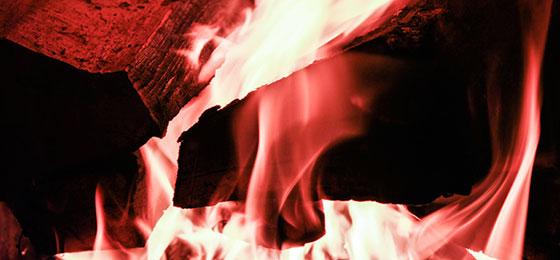Completed Project: "Wood combustion for energy in buildings"

Wood combustion causes air pollution. The project shows that automated boilers are preferable, manual devices need to be well operated, and carbon monoxide is an indicator for harmful pollutants.
The sustainable wood potential makes it possible to increase the contribution of wood to the Swiss energy supply from 3.8% to 7.3%. To achieve this, the target conflict between CO2 neutrality and air pollution needs to be avoided.
The NRP 70 joint project “Wood combustion for energy in buildings” headed up by Prof. Thomas Nussbaumer is aimed at deepening our knowledge of pollutant formation in wood combustion in order to identify optimum operating conditions, develop low emission technologies, and derive air pollution control strategies. The project looked at the use of wood energy with minimised impact on ambient air quality and with a focus on the harmfulness of flue gas, while taking into account both primary and secondary pollutants.
Nine different wood combustion devices were investigated in the Bioenergy Laboratory at the Lucerne University of Applied Sciences and Arts (LUAS), with complementary analyses by the Laboratory for Atmospheric Chemistry at the Paul Scherrer Institute (PSI). The combustion devices cover manually operated wood stoves and boilers, a pellet stove, a pellet boiler and an automated moving grate boiler. The devices were operated with different fuels and at different conditions resulting in 51 parameter settings. Flue gas emissions of carbon monoxide (CO), methane (CH4), non-methane volatile organic compounds (NMVOC), equivalent black carbon (eBC), primary organic aerosol (POA), nitric oxides (NOX), particulate matter (PM), secondary organic aerosol (SOA) and particle bound reactive oxygen species (PB-ROS) were analysed. Furthermore, in-vitro tests on the cytotoxicity of flue gas probes were performed at the Bioscience Lab at LUAS.
When considering a full burning cycle, the emissions of CO, NMVOC, eBC and POA are 3 to 2400 times higher in manual devices compared to automated devices. Manual devices reveal a significant SOA formation with a 50%-69% share of SOA in the total PM, while SOA is negligible for automated combustion during stationary conditions. PB-ROS are 4 to 20 times higher in aged organic aerosol compared to fresh aerosol. CO exhibits significant correlations to harmful primary pollutants (eBC, NMVOC, and POA), to SOA and to cytotoxicity and is therefore rated as an easily measurable parameter for an initial indication of the harmfulness of flue gas.
